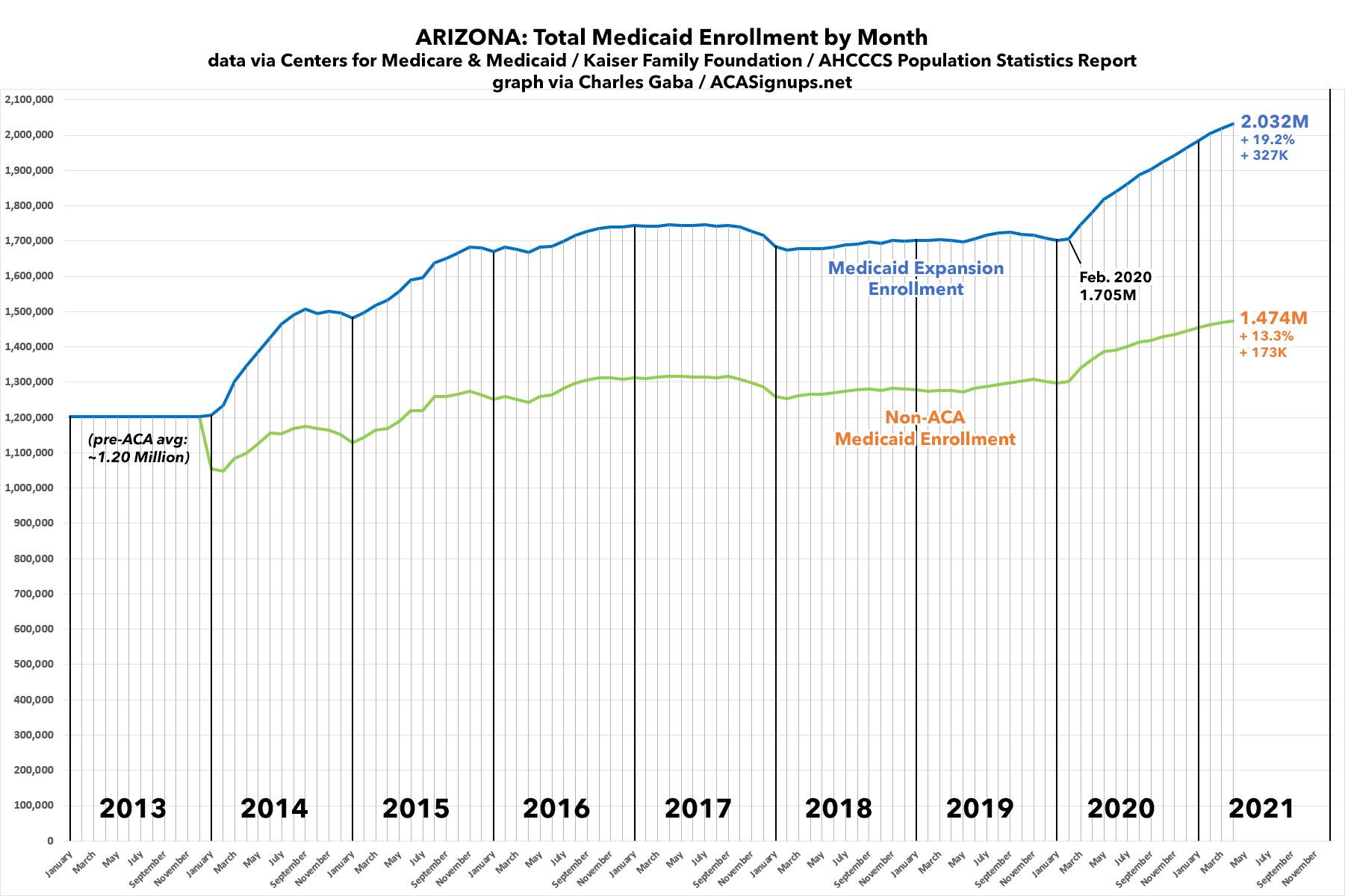Arizona: Medicaid expansion enrollment up 38% since COVID hit; total Medicaid up 19.2%
As I noted recently, I've relaunched my project from last fall to track Medicaid enrollment (both standard and expansion alike) on a monthly basis for every state dating back to the ACA being signed into law.
For total monthly Medicaid enrollment, the official Medicaid.gov monthly enrollment data is only available dating back to late 2013, and it's only current through November 2020. The Kaiser Family Foundation has also compiled the pre-2014 average enrollment for each state based on the 3rd quarter of 2013. In some states I've been able to find more recent enrollment data for December 2020 or later.
For Medicaid expansion enrollment, I'm using data from Medicaid.gov's Medicaid Enrollment Data Collected Through MBES reports. These are even more outdated...I can only get official numbers through June 2019 at the moment. Again, in some expansion states I've been able to get more recent enrollment data from state websites and other sources.
Today I'm presenting Arizona, where Medicaid enrollment averaged around 1.2 million prior to ACA expansion. After expansion was added, AZ enrollment held steady at around 1.7 million people until the COVID pandemic hit in February 2020. Since then, both non-ACA Medicaid enrollment and expansion have increased dramatically (13.3% and 38% respectively); overall enrollment is up 19.2% as of April.
Arizona has 7.15 million residents, so 2.032 million is 28.4% of the entire population.
If the ACA is struck down by the Supreme Court at least 25% of the 559,000 AZ expansion enrollees would lose healthcare coverage immediately (the other 75% were already eligible for traditional Medicaid prior to the ACA, but if the law goes, so would the 90% FMAP match for that population, so there's a very good chance they'd lose coverage as well).
Add the ~150,000 enrolled in subsidized exchange plans and that's up to 709,000 Arizonans who'd lose coverage immediately if the ACA is struck down by the Supreme Court, or nearly 10% of the population.




